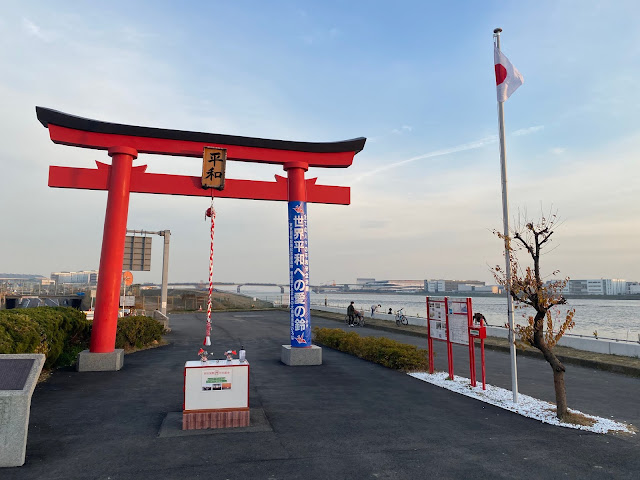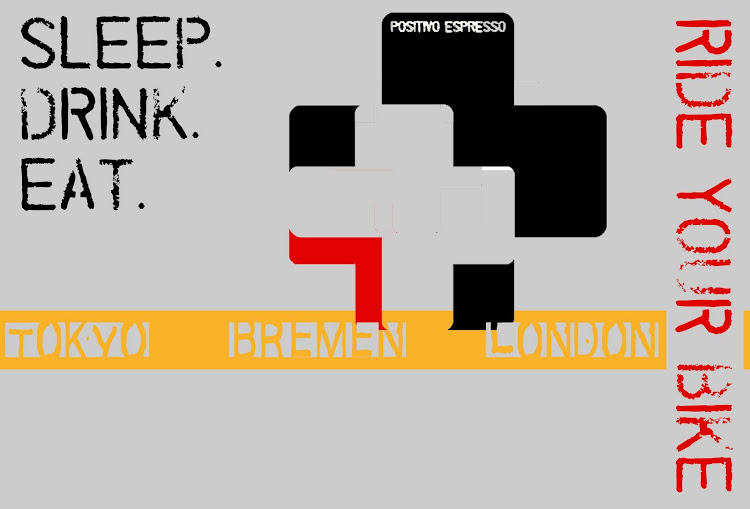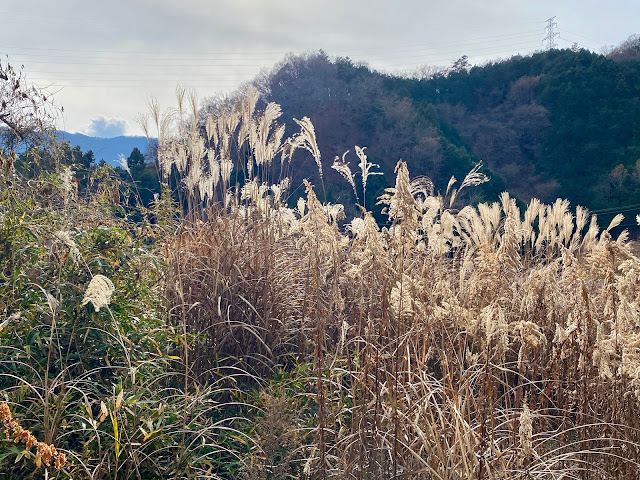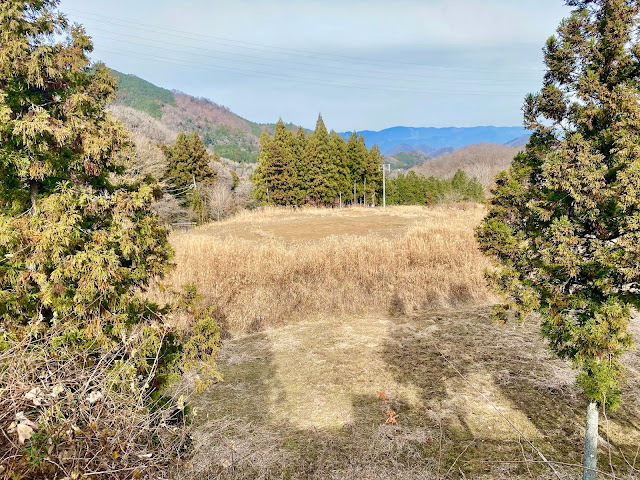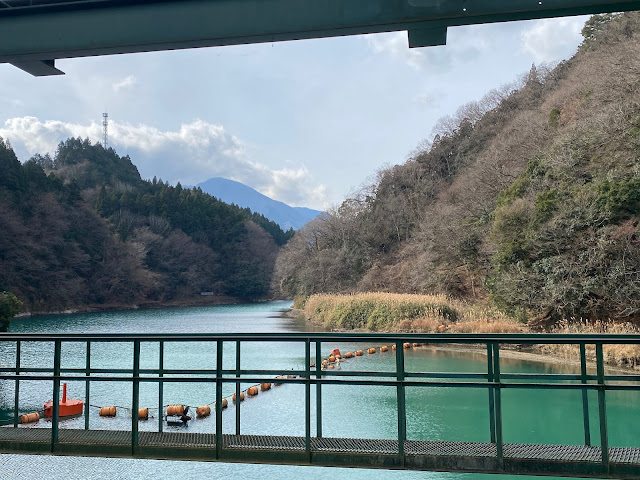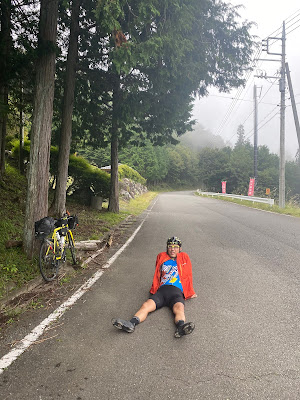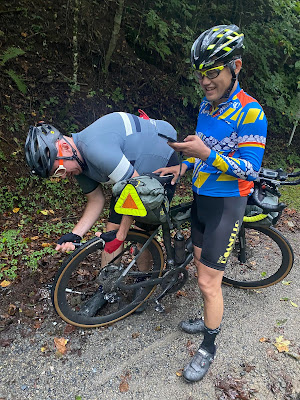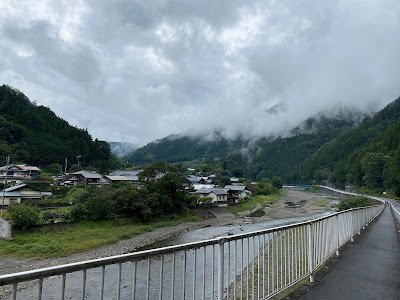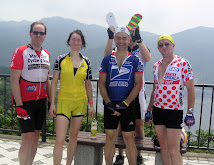The pandemic has severely limited entry into Japan by foreigners since April this year. Until September, the basic rule was, if you are not a Japanese citizen and you leave, don’t plan on being let back in! There were some narrow humanitarian exceptions, and the policy has gradually relaxed, but a September event like the “Japan Odyssey”, with 20-30 cyclists showing up from abroad, many first-time visitors to Japan, and riding obscure passes all over the country, was not in the cards.
So one Tokyo expat, Andrei O., announced in May that he wanted to do a “Not the Japan Odyssey” ride from September 19, with 12 days to cover 12 checkpoints mostly on mountain passes, starting and finishing in Nihonbashi and riding all over the eastern half of Honshu between Gifu/Ishikawa and Aomori. I had met Andrei once, at the Mt. Fuji HC last year, but never ridden together. But I did notice on Strava that his rides seem to explore lots of hidden roads … places near, but different from, routes I have ridden in the past, and that did not even know about. I was intrigued, and Jerome and I decided we might join the first few days.
It seems that Andrei was not really interested in organizing, just wanted to ride. Were the checkpoints (PCs) really reachable? He said he had not ridden most of them. And he noted that the spirit of the Japan Odyssey is one of surprise – the occasional surprise closed road, landslide, need to go around and approach a pass from the opposite side of the mountain or carry a bike over a stream. He seemed to think better of making this a big event.
So Andrei changed the Facebook group name to “Tohoku Cycling Journey” and added a separate “event” page for the actual ride, and went nearly radio silent. That threw most who had joined his “Not the Japan Odyssey” Facebook page completely off the scent. Several months later, a week or so before the big day, someone posted “is this really going to happen?” Andrei replied that yes, he and his buddy M-san would be going. I piped up that Jerome and I would join the start and tag along for a day or two, or three.
Jerome’s and my plan was to ride the first two checkpoints, CP1 on the Mikabo Super Rindo in SW Gunma, nearly 1500m elevation on a gravel road, and CP2 at Kurosu Pass on the Nagano/Gifu border, south of Mt. Ontake (the volcano that took many hikers’ lives when it suddenly erupted during peak vacation time a few years back). Then through Gifu and on to Kanazawa and perhaps to CP3 on the west side of the Noto Peninsula (for the memories of distant past Tour de Noto rides), then hop the train back to Tokyo.
Jerome and I did minimal planning (this time of year it would be not too cold, hopefully not too high, rain would be the worst risk, and we would check into business hotels en route). But it looked as if the leftover road washouts from Typhoon 19 last October would be a major barrier. Many of the roads up to the Mikabo Super Rindo were closed, and many roads from there on to Nagano (Route 299, Budoh Pass, etc.) were also closed. We decided to tag along with Andrei and M-san and hope for the best. In the worst case we could backtrack and we knew several routes via Karuizawa to Nagano were open.
 |
At Nihonbashi - Start
|
The ride start was at 7AM from Nihonbashi. Frankly, I would rather start earlier on a long event, and rather head up the Tamagawa, but Nihonbashi is the traditional “milepoint zero” for roads in Japan. It was the center of commerce for the Edo period, and many roads still show distance in terms of the kilometers from Nihonbashi. Besides, we wanted to ride with Andrei and M.-san at least at the start.
 |
No traffic but lots of traffic lights.
|
 |
Heading out through Bunkyo-ku
|
We met, and headed out a few minutes after 7AM. We headed NW along Kasuga Dori. I was pleasantly surprised to know that it has a REAL bike lane for several kilometers, through Bunkyo-ku. There were actually parking spaces on the street side of the lane, with the lane unobstructed. This made me think that places like Otsuka and Myogadani might be pretty good for bicycle commuting to central Tokyo, even if the lane ends before you get to the Tokyo Dome area.
Anyway, we rode under the Tokyo Metro Expressway (Route 5) for awhile … the same road I drove when heading to/from Nagano this summer repeatedly … and joined the Arakawa around Toda, Saitama.
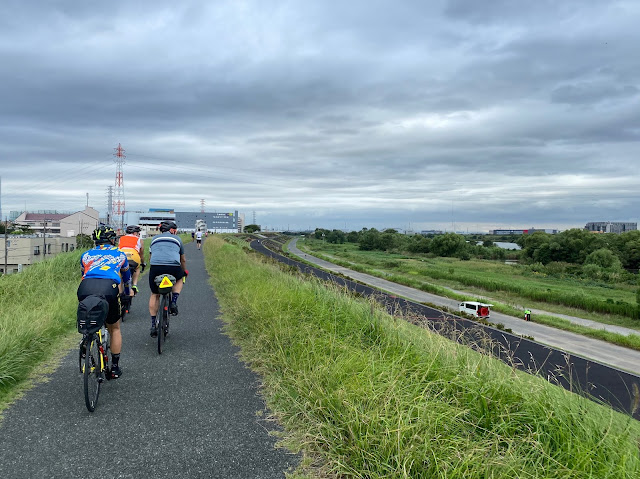 |
Finally along the Arakawa
|
From there we were on the Arakawa levy and going through parks and parallel roads, a route that “East side” Tokyo cyclists know well. As familiar to them as the Tamagawa is to me. A Japanese rider who knows Andrei was waiting for us along the river and rode with us for 15-20km or so, pulling a fair bit. We made it past Kumagaya and stopped quite awhile (40 mins) for food/drink/rest at a “Mini Stop” north of Fukaya (the town famous for its onions, for Eiichi Shibusawa, soon to replace Yukichi Fukuzawa on the 10,000 yen note, and as the home to Akagi, manufacturer of the “GariGari-kun” ice cream bars
that held its price at 60 yen for 25 years.
 |
Rain!
|
Jerome was complaining about an issue with his right pedal. It was not “true” somehow but he felt his foot shifting position. It looked fine when we checked and could not find any problem so we continued on. Eventually we went through Yorii and up through Nagatoro, before turning off and taking local route 13 over a short “two hump” climb and down to Onishi, over the Saitama/Gunma border. Jerome and I realized that we had briefly joined the SR600 Fuji course.
 |
Second convenience store stop -- Gunma
|
After a second 40-minute convenience store stop, we headed west toward Kanna and Uenomura. Following a short climb up to the dam / reservoir, Jerome was having more difficulties with his right pedal. He took a closer look and realized that it was NOT the pedal that was the problem. The entire right side of his Shimano Ultegra crankset had started to come apart.
 |
The end of Jerome's crank, and his ride
|
After some time on Google Maps we had a plan – Jerome would head for Takasaki and stop at the bike shops most likely to have a replacement crank. I would hope to meet him that evening at the hotel. If he needed to go back to Tokyo, and could find a replacement, we could meet the next morning at a shinkansen stop (Ueda?). For the time being, I would continue with Andrei and M.-san.
So three of us that headed on and around 2PM we turned away from the Lake and headed up onto the Mikabo Super Rindo. We climbed up and up, then were on top of the ridge, and rode up and up, and down and up and down, along the top of the ridge. M.-san was going a bit slower now, with his loaded bike, and Andrei and I waited repeatedly. I was feeling decent, better than earlier in the day, and thought perhaps that climbing practice in Nagano in August and early September had paid off!
By this time in the day, I had learned that Andrei is 24 years younger than me, and that last year he completed the Transcontinental Race. Andrei said he was impressed that I was still doing this kind of crazy ride “at my age.” … An embarrassed pause. Actually, I hope I can still do Audax at least another twenty years. Maybe I will even try the Transcontinental sometime? Or the TransAm, its longer equivalent that starts in Astoria, Oregon? I
(The Transcontinental is a nearly 4000kms ultra-endurance, self-supported race across Europe that includes plenty of high passes and lots of gravel, with no help from other riders, friends, or family. Okay, Andrei finished around five days behind Fiona Kolberger, the winner, but still this is a very impressive feat, and I could see why he was confident that he could do the 12 days of this plan. The results for TCR07, the 2019 version, are here.
Anyway, these earlier, Eastern sections of the Super Rindo were in very good shape, and we passed only a few cars or small trucks all the way up to the end of paved section. Highly recommended! We passed 雨降山 – Rainfall Mountain. We read about the tradition of the “three bundles of rain”(三束雨)of Mikabo, known for lightning and wind. As we climbed above 1000m elevation, we passed signs for 投げ石峠 – Rock Throwing Pass. So rain, thunder, wind, and falling rocks? Hard to believe as we were on smooth dry pavement.
Taking the route up and along the ridge had taken a long time, with lots of twists and turns. But most of the roads up the hill that we passed as we went along the ridge were blocked off. “Closed – Not Passable.” So we were fortunate to have chosen to go onto the Super Rindo at its Eastern end instead of trying a short-cut climb further west in Kanna–they were all closed. But it was getting late in the afternoon. By the time we got to the gravel, it was almost 5PM.
The gravel stretch was around 13kms, with a short, paved section about 2/3 of the way through. The road was awful. In many places, it was more like a dry streambed. And it climbed – up around 350m elevation gain over the first 4km. It was very slow going. I got off and walked where I was really worried about falling off. My 700x28 tubeless tires, amazingly, did not go flat. I would recommend 650x40 or wider tires on this road.
Actually, I would not recommend you take this road at all. Andrei had warned that it was nasty, and he had ridden it only a few years ago -- before last year’s typhoon which caused all the surrounding road closures. Tom S. also told me it was awful when had ridden it in past years.
We did not see anyone after 4PM or so. And we were entirely alone on the gravel section. There were plenty of postings to “watch out for bears,” but we did not see any. I guess we were noisy enough on the gravel to send any critters away.
 |
Like riding a riverbed
|
After we got up the gravel climb to nearly 1500m elevation, and well along on the flatter middle section, Andrei’s tire lost air rapidly. He found a big hole in his rear tubeless tire’s sidewall, and his sealant would not fill it. I gave him my “Respawn” IRC sealant and he injected it … and it blocked the hole enough so that he was able to pump up the tire and ride a bit further. But quickly the tire was again losing air. Pumping it again and riding further did not help. And it was getting dark. Eventually he gave up and put in a tube. The two stops and struggling with sealant and tubes … ate up another half hour. I regretted urging him to try the Respawn when he had been ready to put in the tube earlier. By now we were riding in the dark on the last gravel stretch, which was a bit scary. At least we had no more steep climbs -- it was generally down and not too steep. I was learning to anticipate the worst ruts in the road and quickly cross reaching them and ride on the “uphill” (up river?) side where possible.
In the dark, we finally finished the gravel and arrived at 八倉峠 Yōkura Pass. We had planned to descend a road to the west, then down the north side of the ridge and to Nanmoku. That road was closed. Do not pass. Landslide. But at least there was ONE way down, on the south side of the ridge. It would have been a nightmare to go back over the 13km of gravel again in the dark and wet.
Descending to the South would put Andrei and M.-san WAY behind their first day plan. They were already at least an hour or two late, because of the slow progress on the rindo/gravel. And it would take another hour or more to get west through Uenomura and take the tunnel UNDER this ridge and arrive in Nanmoku. From there they had planned to go west, via Taguchi Pass and down into Nagano to finish the first day. At this point, I was just hoping I would be able to find a place to sleep. They had camping gear. I had my credit card.
It was dark. Did I mention it was raining now? I was waiting for wind and lightning, as the place names earlier had warned, but dark and rain, with an 800m drop along 10km of mountain road, were enough even without wind or lightning.
Anyway, we headed down the narrow, winding to the South. The surface was paved and not bad, but there were plenty of rocks and leaves on the road in places. Andrei and M.-san were ahead and I was trying to be a bit cautious and follow.
 |
The white rock is visible with a flash from this side ... descending, was not visible
|
About 1/3 of the way down, still over 1000m elevation, I did not see a rock in the road and hit it with my front tire. The rock was the size of a small fist, but in the dark and damp blended in the same color as the road and leaves. The front of my bike slid out to the right – swoosh – and I went down hard on my left side, landing on my shoulder, driving it into the tarmac.
If a tree falls in the forest and you are close by, you hear it. I did not go down silently. It did not feel good. Broken bone? Bad bruise? Other? Anyway, Andrei and M.-san heard and quickly came back and were at my side.
After I collected my wits, I got up. The good news was that I could stand. I could still move my left arm, even if I could not put weight on it without a lot of pain. My legs felt as if I had tensed up and pulled muscles on both inner thighs. …
We talked about the options. Ambulance up here? Not really needed as long as I could ride downhill slowly. Call for a ride from Tokyo? Jerome, or perhaps even my wife, to come out to the middle of nowhere in the dark of night? None of the options seemed good.
But the bike seemed in working order. After I got over a bit of the shock, I got on the bike and we continued down the hill. If we could get lower down, make it to the valley, we might find lodgings and shelter at least.
After 5-10 minutes more descending, the airhad came out of my front tire. The front rim was making a noise when I braked by now. We stopped and Andrei helped by changing my tire and putting in one of my tubes. M.-san tried to call minshuku that showed up on Google Maps. No rooms. They were either closed permanently, closed this year (pandemic), or full (holiday weekend Saturday night). It was raining HARD now, so we waited a few minutes longer under the protection of some trees overhanging the road, then continued down.
Finally we were at the bottom, at Route 299. After more failed attempts at phoning lodgings, we decided to head west. It was only 10-15kms to the tunnel over to Nanmoku, and along the way there were some rest stops were at least we could be dry and out of the rain – a Michi-no-eki. We would go through some areas of village/town as well.
After a couple minutes I saw a familiar hot spring on the left of the road – the "Villa Seseragi", a small hotel and onsen that looks as if it is probably run by the town or another public body. Not high end, Italian styling on the building -- sticks out like a sore thumb in the daytime. The day spa was closed, but I went inside to the hotel lobby, with my Covid-19 mask, and spoke to the night deskman, who called his manager out. I pleaded that I was injured, and as a result we were not going to make it to our planned lodgings, and did they have anyplace we might sleep? As it turned out, they had one tatami room held in reserve that would fit all three of us. But we could not use the hot spring bath until various reservations were done. And no food (except a few tidbits they gave us. I got the distinct feeling that the kitchen had set aside an evening snack for the two of them, and they had sacrificed for us to consume.
Anyway, we took turns bathing in the tub in our bathroom. My shoulder was throbbing a bit, but still no visible bruising – that takes longer. And it did not hurt so badly as the time I broke my ankle, nor was it obvious to me whether it was a break or just a very bad bruise--damage to the muscles and other tissue in the shoulder area. I suspected it was a broken collarbone, but how would I know? I have never broken my collarbone before. Indeed, this is one of the MOST likely bones to break cycling. So I am always a bit embarrassed in the company of other cyclists to never have broken mine.
There have been lots of cyclists who break a bone and ride on to finish a stage. Just last week, 2018 winner of the Tour de France and a pre-race favorite for this year's Giro d'Italia, suffered a crash at the BEGINNING of a stage when he wiped out after his bike hit a rolling water bottle. Nothing he could do. Bam, he slid and was down. They were in the "neutral zone" of a downhill start through a town, not even racing yet! Anyway, he kept riding and made it to the end of the 150km stage, including up the last 18km, 1200m elev climb to Mt. Etna. X-rays revealed that he was riding with a cracked pelvis. He lost 12 minutes over the leaders.
But the most impressive ride with a broken bone I recall was Tyler Hamilton in the 2003 Tour de France. Tyler broke his -- similar location to my break -- on the first day of the 21 stage race. He insisted on continuing. Everyone thought he would stop once he made it through the first week and to a rest day. Some competitors suggested he was faking it. Nope. He let us doctors speak directly to the public. The doctors told him that he would not cause any permanent damage by riding, as long as he could stand the pain. The team adjusted his bike position to make it a bit more comfortable, gave him a compact crank so he could spin up the hills. Later on he even WON an incredibly difficult mountain stage in the Pyrenees, 198km. He finished the Tour, placed 4th that year. Respect. Of course, later on he fell into disrepute and his career ended with the Lance Armstrong doping scandal.
Andrei and M.-san planned to depart VERY early (4AM? 430AM?). I told them I would sort it out. I was not in shock, I had ridden. The next morning I would either ride to the station, or get a taxi or shuttle bus and make my way back, seeking medical attention if needed but planning to wait until I got to Tokyo.
At least I could sleep some. I woke briefly as they packed to leave, then slept another 3+ hours. Another hot bath. Got partially packed up, then lay down again to recover some energy. The phone rang at 10:02AM. “Sorry but we have a 10AM checkout.”
This place was DEFINITELY not run by the private sector. A 10AM checkout on Sunday morning seemed, well, very Japanese, almost Spartan. Like the village loudspeaker blasting outside at 6AM in a village where I once stayed for a cycling race near Mt. Fuji …
Anyway, I told them I would be out and down in 10 minutes, somehow got fully dressed and my gear together and made it down through the hotel and to my bike. It was not easy, but I got things stowed on the bike and mounted up. If Tyler Hamilton could ride 20 stages of the Tour with a broken collarbone, then I could get to the train station!
 |
20 TdF-sized stages of pain
|
Fortunately, once I was in the riding position … nothing hurt and I could go, slowly. I was hungry (no breakfast either) so decided to head UP the valley toward the michi-no-eki. I had not been through Uenomura in a few years, and was surprised to see a brand spanking new, deluxe version of a michi-no-eki appear after a few kms, on the left side of the road. I stopped for some takeout food (a donburi that tasted delicious, some bread), the restaurant not yet open. After some rest at a table out back, watching people stroll along the river below, I figured I had better not dawdle more, in case the rain picked up as forecast. I got back on the bike and headed up the valley. The closest station was Shimonita, around 30kms away, where I could get a train to Takasaki, then hop the shinkansen back to Tokyo. I still felt decidedly better while riding the bike than any other position – standing, walking, sitting, lying down.
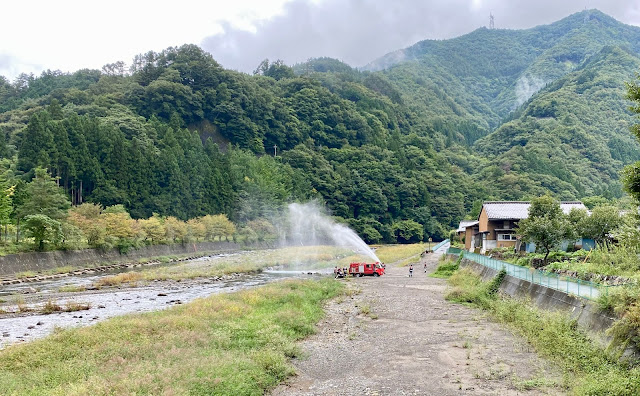 |
Sunday morning fireman practice in Uenomura
|
 |
The new Michi no Eki
|
Soon I came to the OLD michi-no-eki. Except, of course, it is called the “kawa-no-eki” since it backs onto the river. Actually, the new facility ALSO backs onto the river. But better than calling them “east” and “west”. Or 1 and 2. Or Old and New. Anyway, it is a lot smaller than the new one, but a lovely setting. There was someone grilling fish (ayu), with a big tank full of live fish just in front of him. I ordered one, and enjoyed another rest at the back looking at the river.
 |
At the old Kawa-no-eki
|
I still felt better ON than OFF the bike. Back on and heading up the valley, I made a right turn and rode up the 3km hill to the tunnel entrance. I recalled struggling up this hill, totally exhausted, on past brevets and other rides from Tokyo, but somehow, despite the injury, it was easy now, at a slow pace and with only a few kms under the belt so far. The tunnel is a slight downhill when passing from South to North, well-lit, smooth pavement, and very low traffic volume – only a couple cars in nearly 4kms under the mountains. Then it was a quick descent. I stopped for lunch at the Oasis Nanmoku, another michi-no-eki with a lovely view of a different river. It took forever to get a bowl of ramen, and I regretted the time lost. I did need to get back to town and see a doctor, after all!
 |
Oasis Nanmoku
|
 |
Entering Shimonita. It's the water.
|
I got to Shimonita and its sleeping train stop JUST too late for it to be realistic to rinko my bike … especially in my condition. The train would leave in 3 minutes. So rather than wait 30 minutes, I decided to ride a bit further. I went another 10km to Tomioka, rinko’ed my bike there, and caught the next train.
 |
Safely at Tomioka Station
|
The most difficult part of the trip was carrying my rinko’ed bike on my right (non-injured) shoulder for what seemed like 500 meters from one Takasaki train station through the JR station and up to the shinkansen platform. But I made it, got back to Tokyo, and my wife took me to the Keio hospital emergency room. This is a very limited service – nothing like a U.S. hospital emergency room. And they charge an extra fee on top of the standard government rate, I think they said it was for all the anti-Covid preparations.
 |
Ronny Jackson, MD -- 2013 signature back when Obama visited Tokyo
(back before Ronny Jackson crashed and burned in the service of Donald Trump) |
Anyway, there was just one other patient and several family members checking in. Since my wife had called ahead, and I already have my paperwork in their system from a previous physical exam there, I was in and out in 30 minutes or less. The resident confirmed my collarbone was broken, gave me a sling, and set me up for an appointment with the orthopedist – their shoulder expert, Dr. Matsumura – later in the week. Incredible service.
On that Thursday visit, I got a CT scan. The doctor advised that the bone was well-positioned, and the odds were good (75-80%) it would heal well without surgery and, even if it did not, for most people it would not bother their daily lives. For me – cycling, swimming, playing a string instrument, I would be bothered at lot if it did not heal well. He said that given its location near the shoulder end of the collarbone, he said it was 微妙—a close call—some people would do surgery, especially athletes, that would push the chances of proper healing up to 95%, but involve two surgical procedures (the second to remove the plates). He said if it were him, he would try to let it heal without surgery. Anyway, three weeks later, on my third visit, it seems that the bone pieces are starting to reconnect. His main advice this time was “don’t do anything BAD”! If I can follow that advice, it will heal without surgery.
 |
Starting to heal -- the break is still visible about 1cm from the end on the top and 3cm from the end on the bottom of the collarbone (uppermost bone in the x-ray)!
|
Dr. Matsumura also told me that I can start to ride on a fixed trainer … so I need to get my winter trainer setup, ahead of the usual schedule, and stop gaining weight!
By the way, Andrei completed the 12-day ride, solo much of they way. Incredible. Jerome got a new crank back in Tokyo, and rode to Nagoya a week later, via the mountains. M-san rode with Andrei the first 3 days, but Andrei said they went separately after that -- different speeds, styles, and perhaps goals.
My Strava tracks for the two days are here and there.









